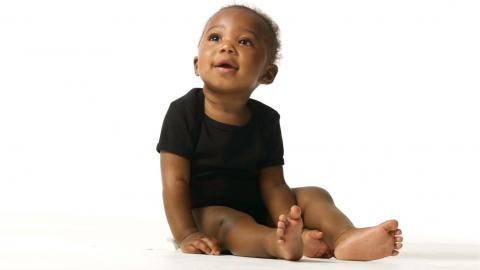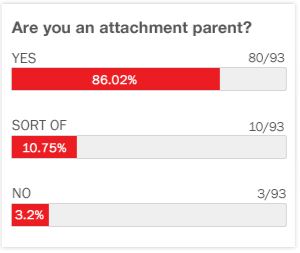
Imagine having a co-worker or boss who constantly burst into tears when you asked her something totally innocuous, like whether she wanted coffee. Or maybe she comes running into your office every hour, screaming bloody murder because you didn’t wear her favorite pair of shoes.
You’d probably want to quit your job.
Unfortunately, as the mom of a toddler, your daily routine can feel a lot like this scenario, and you don’t have the option of complaining to H.R. Toddler tantrums are a common problem, but that doesn’t stop them from feeling like a big deal. It’s not unusual for parents to feel completely overwhelmed and lost when their children are behaving erratically.
Take heart, though – tantrums have nothing to do with your parenting. “There's a biological dimension to tantrums,” explains Kids in the House expert Betsy Brown Braun, MA, best-selling author of Just Tell Me What to Say: Sensible Tips and Scripts for Perplexed Parents. “Children in Sri Lanka have tantrums. Tantrums are a result of frustration, a little child trying to do big things.”
Lisa Sunbury, MA, a parent educator and RIE associate, agrees. “A temper tantrum is a loss of balance. Just like when a child is learning to walk, sometimes they might fall; this is an emotional kind of a fall. It's completely normal and natural.”
It may be normal and natural, but that doesn’t make it any easier when your child throws himself down in the middle of Target because you won’t buy him the sugary cereal. So what is the best way to deal with toddler tantrums? “The way that we handle tantrums is not what most parents think,” says Braun. “Tantrums, once they begin, have to run their course. If your child has begun to have a tantrum, the train has left the station. Stay close, make sure she is in a safe place where she is not going to hurt herself, and let her cry it out. When you see your child start to come back to Earth, you can go down and swoop her up and give her a hug and walk away from it. Later, you can talk about it, ‘You were really upset. You didn't like it when mommy said you couldn't throw your toy and you had a big fuss. Didn't work, did it? And now you're just fine.’”
Of course, some meltdowns can be avoided by ensuring that your child isn’t hungry, overtired, or over-stimulated. “It's certainly important to try and minimize (tantrums) from happening in the first place…But, even preventing tantrums as much as possible is not going to eliminate them,” warns John Grienenberger, PhD, an attachment researcher and Co-Executive Director of the non-profit Center for Reflective Parenting in Los Angeles. “Once the tantrum is started and once the child is past a certain point of upset, really the most important thing is to survive the tantrum, to help the child and to help you get through it without it leading to a bigger problem. Sometimes, parents start throwing consequences at children when they're upset and this can lead to an increased heightening and escalation and really that's not the time to introduce something that's going to be even more frustrating for your child. Wait until later if you need to add a consequence and know that this too shall pass. That it's a normal part of child development and it's a necessary part of children learning how to regulate their emotions and their feelings.”
Allison LaTona, MFT, a family therapist, suggests that parents start by understanding what the tantrum is actually about. “When toddlers are having a tantrum, it's an expression of an idea. They are moving, increasingly, towards autonomy, and they are discovering their preferences, their desires, the own opinions, and they are bumping up against different ideas and opinions; realizing they are separate. When they do that, they have big emotional storms that move through their bodies. They don't, yet, have the skill to regulate those emotions. What they need from us, is to sit with them and be reflective or be empathic of their feelings or idea, (to) allow for that full landscape of human emotion; sadness, frustration, disappointment, to move through their body. Allow for it to dissipate on its own, instead of distracting them or giving in on our limit.”
If we can learn to do this, says LaTona, the tantrum can morph from a problem to an opportunity for growth. “When we model tolerance of their intolerable feelings, we help them to tolerate their own feelings on their own. They have the experience of not getting what they want, which is a tremendous gift.”
For more tips on handling toddler tantrums, watch these videos on Kids in the House:
Betsy Brown Braun, MA, best-selling author of Just Tell Me What to Say: Sensible Tips and Scripts for Perplexed Parents.
Elizabeth Pantley, author of the No Cry Solution series
Lisa Sunbury, MA, parent educator and RIE Associate
The Best Way to Respond to Temper Tantrums
Allison LaTona, MFT, parent educator and therapist
Understanding Toddler Tantrums
John Grienenberger, PhD, attachment researcher and Co-Executive Director of the non-profit Center for Reflective Parenting in Los Angeles.
How to Effectively Handle Tantrums
*Originally posted on HuffPost Parents











I am not very good in stressful situations so I am a little worried about dealing with these but I definitely think it's important to stay calm and really talk to your kid at their level.
Patience is key in these situations